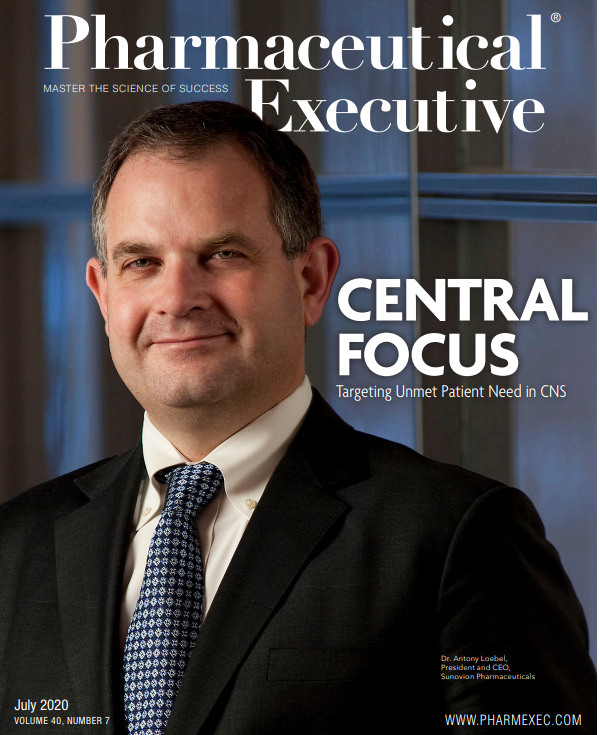Will the Industry Rise to the Occasion?
Pharmaceutical Executive
Gilead's pricing of COVID drug remdesivir is a reminder of pharma's tenuous path forward as it seeks a more holistic image makeover.
Lisa Henderson

The Pharmaceutical Executive team is planning two events to be held next month. First, is our very first virtual conference and expo, Reaching the Healthcare Provider After

COVID-19, on Aug. 13. Next up is the second of what looks like it could become a popular series, Pharmaceutical CEO Leadership closed virtual roundtables, to be held on Aug. 20. The Pharmaceutical CEO Leadership During the Pandemic roundtable appeared online first, and in our July issue. You can also view the video excerpts from the roundtable here. The next one in the planning stages will be spearheaded by Senior Editor Elaine Quilici and will feature key insights from Rob Jekielek, managing director at Harris Interactive. This should prove interesting as we get insights from the CEOs around “Pharma Image: 2021.”
There’s a lot that can be said about Image. It’s not just reputation, or public perception, or one topic. It’s the whole of what an organization does internally and externally to offer an overall picture of who they are and what they represent. In this article from Quilici in June, as well as my editor’s letter from last month, we referenced reputation as a positive that pharma could achieve during COVID-19 and after.
Those sentiments were based on interviews we conducted, presentations we watched, as well as comments from the first roundtable and highlighted by Regeneron CEO Leonard S. Schleifer, MD, PhD, who said, “This is an existential moment for the industry. I think we will rise to the occasion. I am excited about the number of different companies trying incredibly novel approaches for vaccines, the number of companies who are trying different therapeutics. We have to do it scientifically, and we have to do it in an affordable, successful way. If we do, we’ll change industry and, frankly, we’ll change society for a long time.”
As the pandemic raged on past the May 20 roundtable, the broader public continued learning more about scientific innovation, and the basic workings of clinical trials. But soon, lockdowns ended, people grew tired or forgot about distancing and masking, and now we are in another point of our public relationship with the pandemic.
On June 29, CNBC’s Meg Tirrell interviewed Gilead Sciences CEO Daniel O’Day on Squawk Box about the company’s announcement of its pricing of remdesivir (watch video here). The price was set at $2,340 for a five-day course; however, US insurers, in addition to Medicare and Medicaid, would pay $3,120. Remdesivir received emergency use authorization from the FDA to treat hospitalized COVID-19 patients on supplemental oxygen.
Tirrell, of course, hit all the right questions, even, maybe, hopefully referencing our own magazine in her opening question: “This is a very important moment both for Gilead and the drug industry as a whole. You know, one industry publication writing this is a moment that could define the conversation around the pharmaceutical industry’s reputation for years to come. You set this price, basically in line I think with what a lot of people expected. You said it’s well below the value the drug brings, but it’s 30% higher to US insurers than to government insures around the world, in developed countries. Tell us about how you set this price.”
O’Day went on to inform about the differences in prices and how the therapy would influence reductions in hospital stay and healthcare spend. Tirrell pressed on the role of the middleman in the pricing, as well as the question of supply for America vs. rest-of-world. And O’Day dutifully explained those also.
But at the end of the day, the headlines were mixed for Gilead. While some thought the announcement would lead to further erosion of pharma’s reputation, others referenced estimates from the Institute for Clinical and Economic Review (ICER) in Boston that remdesivir priced at $2,800 would be “reasonable” given its overall positive effect on those healthcare costs. Still, others voiced concern that the price doesn’t account for US taxpayer money. The same money that helped fund the NIH clinical trial of remdesivir for COVID-19.
Clearly, this was the first pricing move out of the COVID gate, and it isn’t a vaccine or a “cure.” However, it is a reminder that the next steps are not without image risk. Continuing the dialogue that therapies and medications are important to the whole healthcare spend and quality of life for people, that the middlemen are also not absolved of responsibility, and that there is need for a more transparent patient pricing system would be a major benefit toward a more holistic image makeover.
Lisa Henderson is Editor-in-Chief of Pharm Exec. She can be reached at lhenderson@mjhlifesciences.com. Follow Lisa on Twitter: @trialsonline

Addressing Disparities in Psoriasis Trials: Takeda's Strategies for Inclusivity in Clinical Research
April 14th 2025LaShell Robinson, Head of Global Feasibility and Trial Equity at Takeda, speaks about the company's strategies to engage patients in underrepresented populations in its phase III psoriasis trials.
Beyond the Prescription: Pharma's Role in Digital Health Conversations
April 1st 2025Join us for an insightful conversation with Jennifer Harakal, Head of Regulatory Affairs at Canopy Life Sciences, as we unpack the evolving intersection of social media and healthcare decisions. Discover how pharmaceutical companies can navigate regulatory challenges while meaningfully engaging with consumers in digital spaces. Jennifer shares expert strategies for responsible marketing, working with influencers, and creating educational content that bridges the gap between patients and healthcare providers. A must-listen for pharma marketers looking to build trust and compliance in today's social media landscape.
Bristol Myers Squibb’s Cobenfy Falls Short in Phase III Trial as Add On Therapy for Schizophrenia
April 23rd 2025In the Phase III ARISE trial, Cobenfy administered as an adjunctive treatment to atypical antipsychotics for patients with inadequately controlled schizophrenia did not achieve statistically significant improvements.